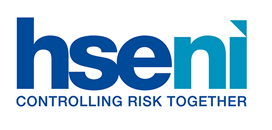All European product safety Directives require information to be made available to end users to enable the safe use of products. Others, such as installers, may also need information to enable the product to be safely installed before use.
User instructions should be comprehensive, easy to understand, and in the user's own language (except certain parts for specialist maintenance activity where this will not be undertaken by the user). Other information provided on the product such as warnings, which may be given in pictorial form, should be explained in the user instructions. User instructions essential for safety should normally be provided in a printed form.
What must product instructions cover?
This depends on the relevant product safety Directive, but can be summarised as sufficient detail about the product regarding:
- intended use, and ways the product should not be used
- the manner of installation
- correct use to ensure health and safety
- safe maintenance, including cleaning
Some Directives specify the content of Instructions for users and others such as installers in significant detail. For example, the Machinery Directive, where essential health and safety requirement (EHSR) 1.7 specifies detailed information requirements for all types of products covered, and EHSRs 2.1.2, 2.2.1.1, 2.2.2.2, 3.6, & 4.4 supplement this for specific types of machinery (eg cleaning instructions for machinery processing foodstuffs to avoid cross contamination in the processed product).
Others such as the Low Voltage Directive are less specific, although, where possible key information is required on the electrical component itself so it can be used safely in the manner intended.
Instructions should cover not only intended use of a product, but take account of reasonably foreseeable misuse, warning of ways the product should not be used. Where the product is intended to be used by non-professionals instructions should be worded and laid out taking account of the level of general education and understanding that can be expected of such users.
In some cases the results of product testing should be provided in the User Instructions. For all machinery information on airborne noise emissions must be provided, and in the case of hand-held and hand-guided machinery, information concerning vibrations transmitted must also be provided. Where machinery is likely to emit non-ionising radiation information concerning the radiation emitted for the operator and exposed persons should be provided.
Where the on-going safety of a product depends on it remaining within certain parameters (eg below a certain force limit for a powered door/gate, the stopping time of a braking system, trip current of electrical equipment), this information should be specified within the maintenance, inspection or examination sections of the instructions.
In the case of partly completed machinery assembly instructions must be provided instead. Assembly instructions must contain a description of the conditions which must be met with a view to the correct incorporation of the partly completed machinery into the final machinery, so as not to compromise safety and health.
What language should instructions be in?
Instructions, and warnings given on products must be in the official Community language or languages of the European state(s) in which the product is placed on the market and put into service. This may require dedicated language versions for each member state the product is marketed in, or, as is often seen, multi-language instructions / warnings including all languages of all the members states the product is placed on the market. Where pictorial warnings are given on the product these, along with the meanings of any warning devices, should be explained in the Instruction Manual.
Exceptionally, parts of the machinery maintenance instructions intended for use only by specialised maintenance personnel mandated by the responsible person may be supplied in the one official Community language which the specialised maintenance personnel understand. However, the other general parts of the user instructions must be supplied in the language of the end user.
A copy of the original Instruction Manual should be included as part of the technical file for a product, along with any translations made into other Community languages.
